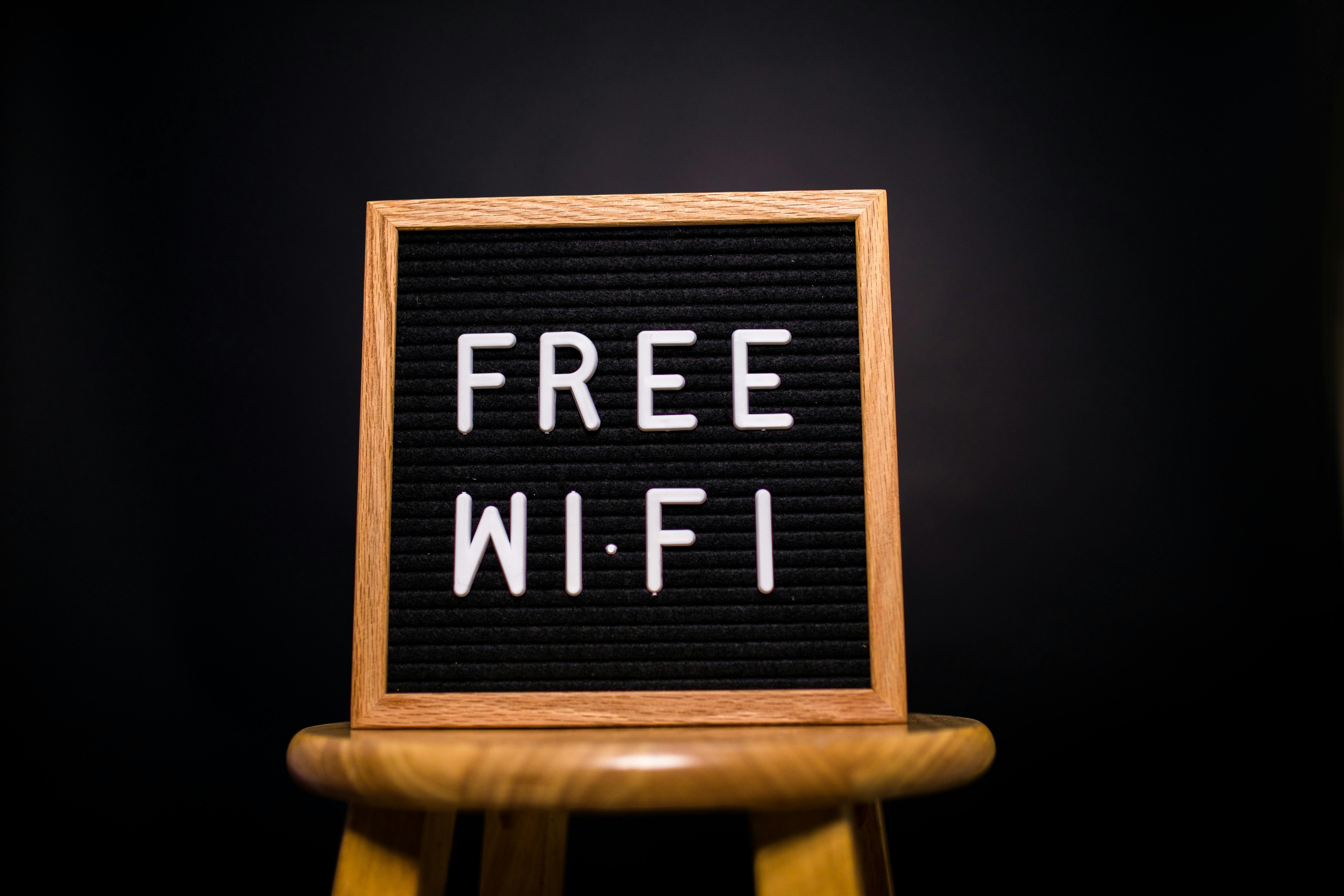Wi-Fi Hotspot Plans: Comparing the Best Options for On-the-Go Connectivity
In today's digitally connected world, a strong wi-fi hotspot plan ensures seamless internet access wherever you go, for work or leisure. A strong Wi-Fi hotspot plan can be the lifeline for your digital needs when away from home.

Navigate with Ease: Reliable Wi-Fi Hotspot Plans
Nearly 80% of Americans prioritize internet access on the go. Are you among them?
In today's digitally connected world, a strong wi-fi hotspot plan ensures seamless internet access wherever you go, for work or leisure. A strong Wi-Fi hotspot plan can be the lifeline for your digital needs when away from home.
Considering the plethora of options available, it's crucial to find a plan that matches your data usage, speed requirements, and budget.
Introduction
In today's ever-connected world, seamless internet access has transcended from luxury to necessity, especially for individuals who pivot between different locales for work, adventure, or leisure.
Wi-Fi hotspot plans offer tethered assurance in a wireless world.
These specialized plans are akin to personal beacons of connectivity, designed deliberately to keep multiple devices online when traditional Wi-Fi networks are out of reach or unavailable. Whether you're orchestrating remote business operations, streaming content during travel, or connecting smart devices on the move, these plans cater to a wide spectrum of requirements.
Selecting the right Wi-Fi hotspot plan is not merely about maintaining continuous internet access; it's about forging a mobile oasis of productivity and entertainment. Therefore, it's imperative to scrutinize the minutiae of data allowances, signal strength, and price points, ensuring that your final choice embodies an optimal blend of value and performance. Consider this guide a roadmap to navigate the landscape of on-the-go connectivity, homing in on a service that resonates with your lifestyle and digital demands.
What is a Wi-Fi hotspot and how does it work?
A Wi-Fi hotspot is a wireless access point that allows you to connect to the internet using your devices such as smartphones, tablets, or laptops. It works by using radio waves to transmit and receive data between your device and a router or modem.
When you connect to a Wi-Fi hotspot, your device communicates with the router or modem through wireless signals. The router or modem then connects to the internet service provider's network, giving you access to the internet. This allows you to browse websites, stream videos, check your emails, and perform various online activities.
The range of a Wi-Fi hotspot can vary depending on factors such as the type of router or modem, the strength of the signal, and any obstructions like walls or other electronic devices that may interfere with the signal. Typically, the range can extend from a few meters to several hundred feet.
It's important to note that Wi-Fi hotspots can be found in different locations, such as cafes, hotels, airports, or even in your own home if you have set up a wireless network. Some hotspots are free to use, while others may require a password or payment for access.
Overall, Wi-Fi hotspots provide convenient and wireless internet connectivity, allowing you to stay connected and access the internet on the go or in the comfort of your own home.
How do I get a Wi-Fi hotspot?
If you're wondering how to get a Wi-Fi hotspot, there are a few options available. One popular way is to sign up for a mobile data plan with your wireless carrier. This allows you to use your smartphone as a hotspot, turning it into a Wi-Fi access point for other devices.
Another option is to purchase a dedicated Wi-Fi hotspot device. These portable devices use a cellular network to provide internet connectivity and often come with their own data plans. They can be a great option if you need to connect multiple devices or if you're in an area with limited Wi-Fi access.
In recent years, many coffee shops, libraries, and other public places have begun offering free Wi-Fi hotspots. These are typically open networks that anyone can connect to. Just be sure to use caution when connecting to public Wi-Fi, as these networks may not always be secure.
Some internet service providers also offer Wi-Fi hotspot access as part of their packages. This allows you to connect to their network of hotspots when you're out and about. It's worth checking with your provider to see if this is an option for you.
Overall, getting a Wi-Fi hotspot is quite simple. Whether you choose to use your smartphone, purchase a dedicated device, or take advantage of public or provider-provided hotspots, you'll be able to stay connected wherever you go.
Key Factors to Consider When Choosing a Hotspot Plan
When sifting through hotspot plan options, data limits are paramount. You'll want to zero in on plans that align with your digital habits – be they data-heavy video conferencing or simple email checks.
Providers wield a spectrum of plans with varying speeds suitable for different tasks. Assess if high-speed 5G connectivity is a necessity for your seamless streaming and gaming, or if more modest speeds suffice for your web browsing and music streaming. Balancing speed with your expected usage can foster a cost-savvy choice without compromising on efficiency.
Moreover, consider network coverage with a critical eye. An expansive reach that blankets both urban canyons and rural retreats ensures that you stay connected regardless of locale. This not only impacts the plan's utility but also dictates the reliability of your personal oasis of digital connectivity.
Lastly, a judicious evaluation of plan pricing against your budget will narrow your options. While premium plans seduce with unlimited data and extra perks, assess if these benefits justify the outlay. More economical plans might offer a middle ground, balancing respectable data allowances with a budget-friendly tariff, ideal for the cost-conscious user.
Decoding Hotspot Plans
As you navigate the maze of Wi-Fi hotspot plans, it's imperative to dissect the underlying nuances of each offering. Bear in mind that advertised speeds often represent the plan's maximum capability, and actual performance can vary. This variance typically depends on network congestion, your geographical position, and the capabilities of your hotspot device. Consequently, the promised lightning-fast connection might fluctuate during peak times or in densely packed areas.
In scrutinizing the particulars of a plan, look beyond just the "unlimited data" headline. Such plans often come with a catch in the form of a data cap after which speeds can throttle, affecting your online experience. To make an informed decision, review the fine print on data prioritization and the threshold for reduced speeds. By doing so, you establish a realistic expectation of the service quality over a billing cycle, preventing surprises that could interrupt your digital endeavors.
Data Limits Unraveled
Data caps are a vital aspect to consider—they dictate how much data you can use before experiencing slowdowns.
At 50 GB, some users hit their data limit—speeds may then be reduced, impacting streaming and downloads.
When choosing a hotspot plan, it's not just about the gigabytes included. It's also about understanding how your usage will influence speeds, especially if you hit the cap.
Consider how often you’ll be downloading large files or streaming in high definition. These activities devour data and may result in reaching data limits sooner than expected.
Speed vs. Coverage Trade-offs
Speed is not synonymous with coverage.
Selecting the perfect Wi-Fi hotspot plan often resembles a balancing act. Individuals may find themselves at a crossroad—choosing between lightning-fast speeds and the promise of widespread network coverage, struggles that are exacerbated when jumping between urban and rural locales. Conversely, coverage might be extensive but at the sacrifice of peak speeds, presenting a crucial decision point for users dependent on connectivity for their lifestyle.
Coverage doesn't equate to speed.
You may prioritize fast data speeds—essential for streaming or downloading large files. However, imagine finding these speeds are only accessible in confined areas. Conversely, robust coverage ensures connectivity across vast regions, but potentially at lower, more inconsistent speeds.
Assessing carriers’ coverage maps is indispensable.
Before you sign up for any plan, closely inspect the coverage maps offered by different providers. Look for the fine balance between 2023’s blazing-fast benchmarks and the sprawling coverage commonly sought by frequent travelers. This exercise often reveals critical insights into the practicality of a plan, helping you avoid the frustration of spotty service or sluggish speeds.
Comparing Top Wi-Fi Hotspot Plans
Verizon's Ultra Wideband 5G provides unprecedented speeds, an asset for urban-based professionals or content creators. Its premium comes with a high cost and spotty rural coverage.
AT&T's Unlimited Premium PL offers generous data with reliable reach, a boon for those traversing broader landscapes.
T-Mobile's Go5G Plus includes entertainment perks like Netflix and substantial 5G reach, a major allure for the data-hungry and those with a penchant for on-the-go entertainment. While its international coverage is a standout, the price may deter the budget-conscious user.
Budget-savvy individuals might lean towards T-Mobile’s 2GB plan or Mint Mobile’s offerings, striking a balance between affordability and data provision. When constraints are monetary, yet the need for connectivity persists, these options merit attention, providing a cost-effective pathway to staying connected without the frills of pricier counterparts.
Nationwide Network Showdown
When choosing your wireless guardian for connectivity, coverage is a pivotal battleground. Each carrier waves its own flag, be it Verizon, AT&T, or T-Mobile, claiming superiority in America's vast and varied topography. The truth is, geographic and regional factors can dramatically influence which provider comes out on top.
In urban jungles, Verizon’s Ultra Wideband 5G shines with its cutting-edge speeds, while AT&T boasts extensive coverage that's hard to beat when venturing into more expansive, open spaces. Meanwhile, T-Mobile asserts dominance in the 5G arena with significant investment in their network that blankets many urban and suburban areas with high-speed data.
However, the crowning of the true nationwide champion hinges on where you stand—or roam. Each provider presents persuasive arguments; but, for the roaming user, the question of “Who reigns supreme?” may have a different answer in every zip code. Consider the terrain, your specific needs, your budget, and make a strategic choice in this high-stakes connectivity chess game.
Verizon's 5G Edge
Verizon’s 5G Edge marries ultra-fast speeds with the growing demand for mobile connectivity, ensuring that tasks requiring high bandwidth can be performed almost anywhere. Particularly, it's designed for users who frequently find themselves on the go, necessitating a robust network that can keep up with high data demands.
This provider prides itself on delivering one of the fastest 5G networks. Their coverage, especially in metropolitan areas, speaks for itself.
However, note that Verizon's 5G Edge may come with a premium price tag. The cost is often justified by the unparalleled speed (gigabit-level in ideal conditions) and network reliability.
Those who indulge in data-heavy activities such as streaming UHD content, gaming, or managing large file transfers will find Verizon's network capabilities particularly appealing, even though this might lead to a higher monthly investment.
Cost-benefit considerations are key when opting for Verizon's high-end service. Expect leading-edge performance that justifies the expense for business professionals and power users alike.
Finally, Verizon's commitment to expanding and upgrading their network ensures continued improvements. Users invested in the 5G Edge experience will likely witness ongoing enhancements and even more comprehensive coverage over time.
AT&T's Coverage Consistency
AT&T's 5G network boasts expansive outreach across the United States, which ensures a steady connection in urban as well as suburban areas. This broad network is crucial for those who require reliable access no matter their location.
Their LTE backup is robust. Should you ever leave 5G areas, expect seamless transition.
Even in rural settings, AT&T's coverage remains strong, often surpassing competitors (especially in regions where other providers struggle with connectivity) and maintaining a consistent signal.
Speeds tend to be stable across different areas, ensuring that tasks from video conferencing to web browsing are completed without frustrating interruptions or long waits.
For those relying on connectivity to support their livelihood, whether it be through telecommuting, remote consulting, or live broadcasting, AT&T's coverage provides peace of mind that connections will remain stable and facilitate their professional activities.
Indeed, for a mix of urban and rural connectivity needs, AT&T's coverage is a solid choice. It offers balance between performance and price, making it a compelling option for various customer profiles.
Budget Hotspots Examined
For the cost-conscious, exploring budget hotspot options is a sage move. These plans can slice monthly expenses without sacrificing essential connectivity. T-Mobile's 2GB plan is a prudent choice for users with modest data needs.
On the other side of the spectrum, Mint Mobile casts its net wider by offering generous data allowances at significantly lower costs. It's an attractive solution for users desiring more data without the financial sting of premium plans.
Remember, budget does not equate to inferior. Careful comparison of 'value-for-money' options can uncover plans combining affordability with reliable coverage.
T-Mobile's Low-Cost Leader
T-Mobile's reputation for affordability isn't unwarranted when examining its budget-friendly plans. The carrier's commitment to value shines through with its competitively priced offerings, which stand out in a marketplace often dominated by costlier alternatives.
With T-Mobile's 2GB plan, users can enjoy essential wireless service without the anxiety of steep monthly bills. It's a plan designed for the frugal, those who navigate the digital world with a lighter footprint, requiring less data for tasks such as checking emails and occasional web browsing.
For users whose online activities demand more than a mere 2GB, yet who still retain a watchful eye on their finances, T-Mobile presents an intriguing compromise. Its plans deliver respectable data caps that cater to more robust internet usage while still undercutting the prices of larger data plans from rival providers.
The implications of such an offering are significant for the budget-minded digital nomad or student. With access to T-Mobile's nationwide network, users can reliably connect to the internet for their essential needs without incurring the fiscal burden typically associated with data-rich plans.
Choosing T-Mobile for your hotspot needs could translate into substantial savings over time. Savvy consumers will find it wise to gauge their data usage against T-Mobile's low-cost plans for an optimal blend of economy and connectivity.
Mint Mobile's Value Victory
For those prioritizing thrift yet craving connectivity, Mint Mobile emerges as the knight in shining armor. This carrier offers plans rich in value and capabilities, without the protracted commitment and heavy bills associated with larger carriers.
Indeed, Mint Mobile's prepaid hotspot plans stand out in a market saturated with costly options. By buying service in bulk—three, six, or twelve months at a time—customers can enjoy significant savings over monthly renewals. This business model caters to cost-conscious consumers who are comfortable planning their data usage over longer periods while still accessing high-speed internet.
Navigating a path through the financial jungle of mobile data can be daunting. However, Mint's clear-cut pricing allows for straightforward budgeting, making the choice less about complexity and more about the freedom and flexibility inherent in its usage plans. It's an oasis of value in a desert of high expenditure.
Arguably, the allure of Mint Mobile resides not only in its wallet-friendly rates but also in its straightforward, no-nonsense approach. You won't find bill credits or complicated promotions clouding the true cost; instead, expect a transparent pricing model that makes it easier to understand and manage your spending. Practicality joins forces with cost-efficiency, creating a true haven for the data-driven consumer seeking fiscal prudence alongside digital inclusion.
Optimizing Your Hotspot Experience
Maximizing your hotspot's efficiency rests on a foundation of prudent data management and an understanding of your environment. Regularly monitoring your usage is critical to avoid unexpected data depletion. Be mindful of background applications that could surreptitiously siphon data, and consider employing data-saving modes when your activities are not bandwidth intensive. Additionally, the location of your hotspot device can influence signal strength—seek a spot that favors connectivity while minimizing interference. These simple but effective practices help ensure your mobile hotspot remains a lifeline to the digital world, precisely when you need it.
Coverage Checks Crucial
Before committing to a Wi-Fi hotspot plan, validating the network coverage in your area is essential.
- Visit the provider's official coverage map: Always start by checking the carrier's online coverage tool to get an initial assessment.
- Look for real-world user experiences: Forums and community feedback can reveal network performance nuances not captured by official maps.
- Conduct a field test if possible: Some carriers offer trial periods or money-back guarantees, allowing you to test the service in your common areas.
Real-life usage often differs radically from estimates; only thorough due diligence ensures reliable service.
A comprehensive coverage check can prevent post-purchase regret and ensure consistent connectivity, wherever your ventures lead.
Smart Data Management Tips
Effective data management is paramount for capitalizing on your hotspot plan without overages.
- Monitor your usage: Keep an eye on how much data you're consuming to avoid surpassing your plan's limits.
- Set data limits and alerts: Use tools or apps that notify you as you approach your data cap.
- Prioritize your activities: Reserve data-heavy tasks, such as video streaming and downloads, for Wi-Fi.
- Use data compression tools: Seek out browsers or apps that reduce data usage by compressing information.
Understanding your data habits can significantly reduce unnecessary consumption.
Leverage built-in operating system features that track background data usage by individual apps.
With these strategies in play, you can maximize your hotspot plan's potential while keeping costs in check.
Additional Considerations
Consider geographical constraints earnestly.
While many hotspot plans boast significant coverage, actual connectivity can vary dramatically across locations. Leverage online resources to scrutinize the coverage map of prospective carriers, ensuring you select a plan that aligns with your regional requirements. Furthermore, do not overlook customer testimonials as they provide practical insights into the true reliability of the network.
Bear regional network strength in mind.
When traveling, international coverage considerations come into play. Some plans offer generous international perks, but rates and coverage can differ abroad. Therefore, consider a plan with favorable terms for international travel if you frequently work or venture overseas.
Explore the hidden costs thoroughly.
Remember to account for potential additional charges — such as device costs, activation fees, or penalties for early termination — that can alter the economic attractiveness of a plan.
Analyze the plan's scalability with foresight.
As your connectivity demands evolve, so too may the suitability of your chosen plan. Ensure there's scope for scaling your data allowance up or down as necessitated by your usage patterns and professional commitments, securing a plan that remains congruent with your dynamic needs.
Conclusion
As we distill our exploration of Wi-Fi hotspot plans, certain truths become clear: no single plan fits all patterns of usage, areas of coverage, and budget constraints. Your individual needs should drive your selection process.
Reflect on your data habits before committing.
Specifically, tally up your average data usage, taking stock of both the peaks and troughs throughout your monthly online activities. This step ensures you select a plan that mirrors your real-world consumption, preventing both data overages and underutilized allowances.
Evaluate the network's performance against your mobility.
When choosing a plan, it's critical to align the network's coverage map with your typical travel routes, work locales, and leisure destinations to maintain seamless connectivity. This congruence is paramount, especially for those whose work demands constant high-speed Internet access.
In the final analysis, navigating the myriad of Wi-Fi hotspot plans requires a nuanced understanding of your personal internet footprint, a clear-eyed assessment of the network's performance relative to your life's geography, and the prudence to parse the fine print. As eclectic as these factors may seem, they converge on a singular counsel: be methodical and discerning when selecting your lifeline to the digital expanse. With this guide in hand, embrace the journey of choosing a Wi-Fi hotspot plan that elevates your connectivity experience to new heights. Remember, the term "optimal" is relative—what sings to the needs of one may not resonate with the frequency of another's demands.




